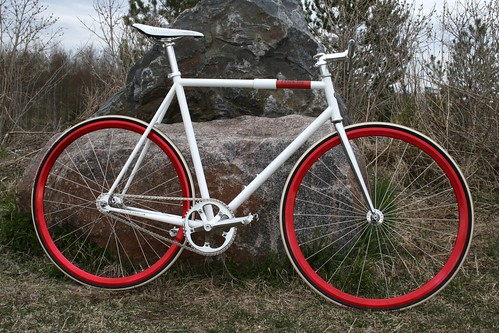Originally Posted by
z415
Wheelbase considerations. IIRC, a longer wheelbase, generally from a curved fork, means a more stable ride. To be frank, I am very tired and I cannot remember the pros and cons of each. I know that I would prefer a smaller wheelbase for my road bike and larger for a tourer or anything for the long haul.
Steering geometry (wheelbase, rake, trail, etc.) is independent of whether the fork is curved or straight.
If you look at a bike with a straight fork, e.g.:

you can see that the front wheel axle is still located forward of where it would be if the fork were a direct extension of the head tube. So you can get between the fork crown and any chosen position for the front axle with either a straight fork design or a curved one.
And the positive forward rake (whether by using a curve or a straight fork with an angle at the crown) is designed to *reduce* stability, not to enhance it. Bicycles built for extreme stability, such as used for motor-paced speed records, use a reversed fork design with negative rake and are designed for straight-line riding. But for normal riding a bike is designed with some positive rake to reduce stability and make for easier turning.